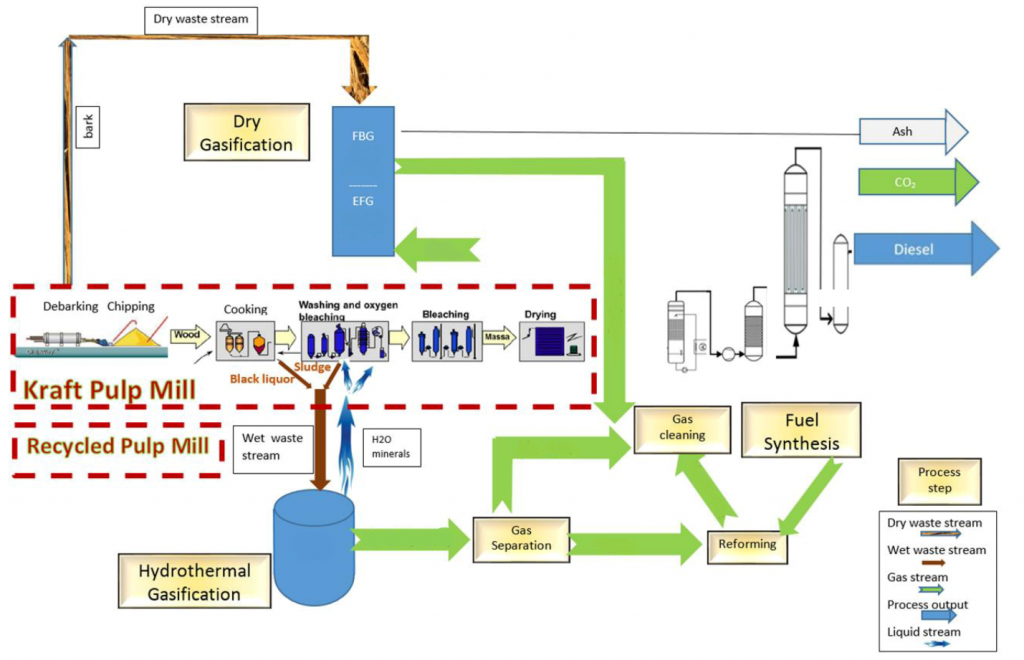Source: EU H2020
Partner: EPFL, CEA, SINTEF, RISE Energy Technology Center, IVL, GRENOBLE INP, SOFRESID, FIBRE EXCELLENCE, Top Industrie, Absiskey.
Duration: October 2018 – October 2022 (48 months)
External website: EU page
Abstract:
The transport sector is dominated by the use of fossil fuels, and alternative fuels represent currently only 5% of fuel consumption in EU. The EU objective for the share of renewable energy in the transport sector is 10% in 2020. To achieve this goal, new advanced biofuels are needed and must be produced from alternative feedstocks. The Pulp&Fuel concept is to develop a simple and robust fuel synthesis process taking advantage of the synergy between super critical water gasification (wet gasification) and fixed bed gasification (dry gasification). For the Pulp&Fuel project, we have chosen to study the integration of the full process on a pulp mill. The developed process will take advantage of low to negative value wet and dry resources on a paper mill to add value to the overall process. The yield of biofuels will be significantly increased to 28% compared to a classic approach that would only yield 18%. The Pulp&Fuel final objective is to produce biofuels below 1 €/L without having a negative impact on the existing operations of the pulp mill. To achieve these goals a team of 10 partners, leaders in their field, from 4 EU-member states, will join efforts. To this end, we have defined five ambitious specific objectives:
– Improve the efficiency of the dry gasification process from 70 to 80%
– Improve the carbon conversion of the wet gasification process to above 90%
– Improve fuel synthesis to obtain carbon efficiencies above 50% (state of the art 45%)
– Integration of the full process and synergy between dry and wet gasification
– Integrated assessments will show that biofuels can be produced below 1 €/L
The Pulp&Fuel project addresses the topic “liquid diesel- and gasoline-like biofuels from biogenic residues and wastes through either chemical, biochemical and thermochemical pathways, or a combination of them” of the LC-SC3-RES-21-2018 call.
Contact persons: Maziar Kermani (maziar.kermani@epfl.ch)
